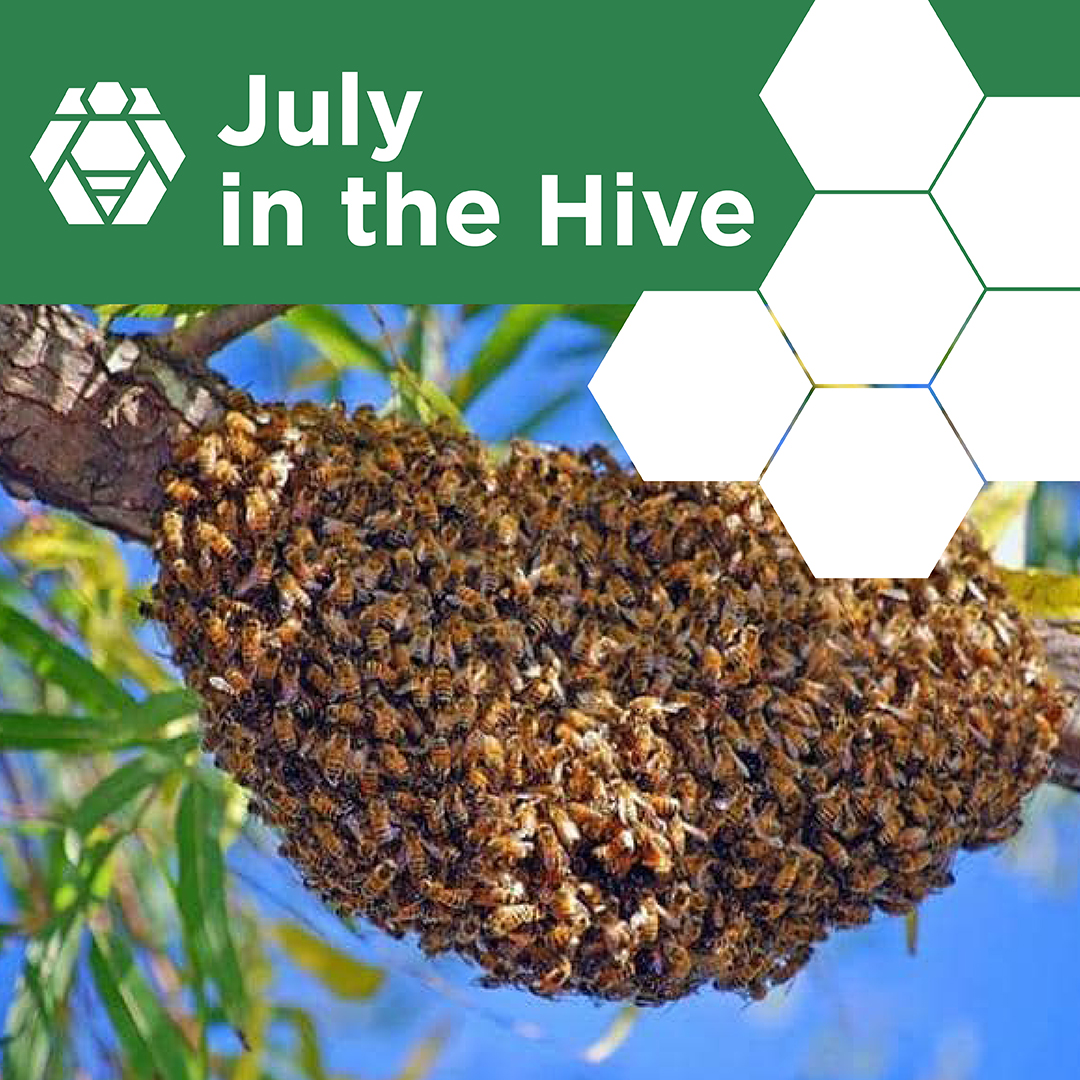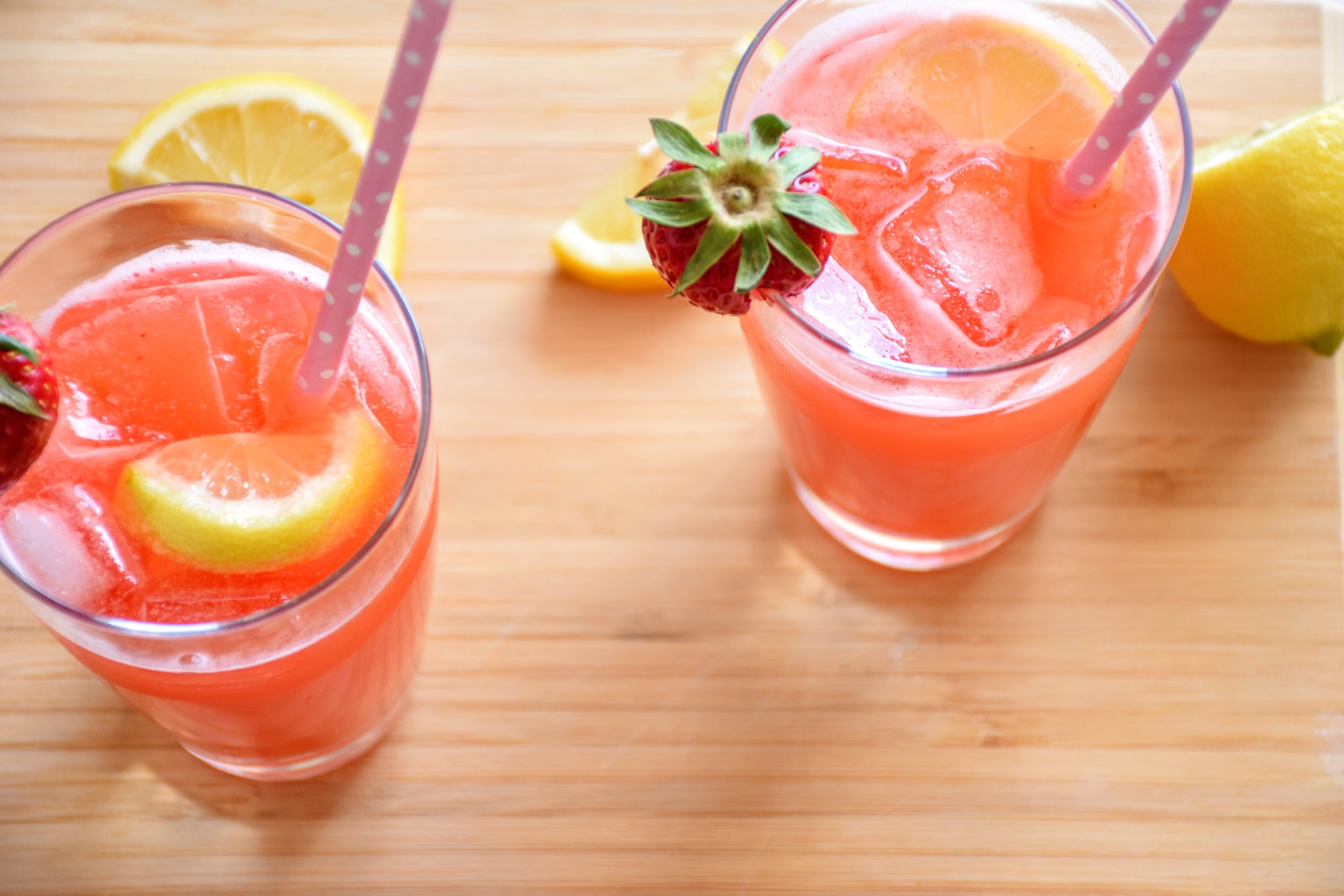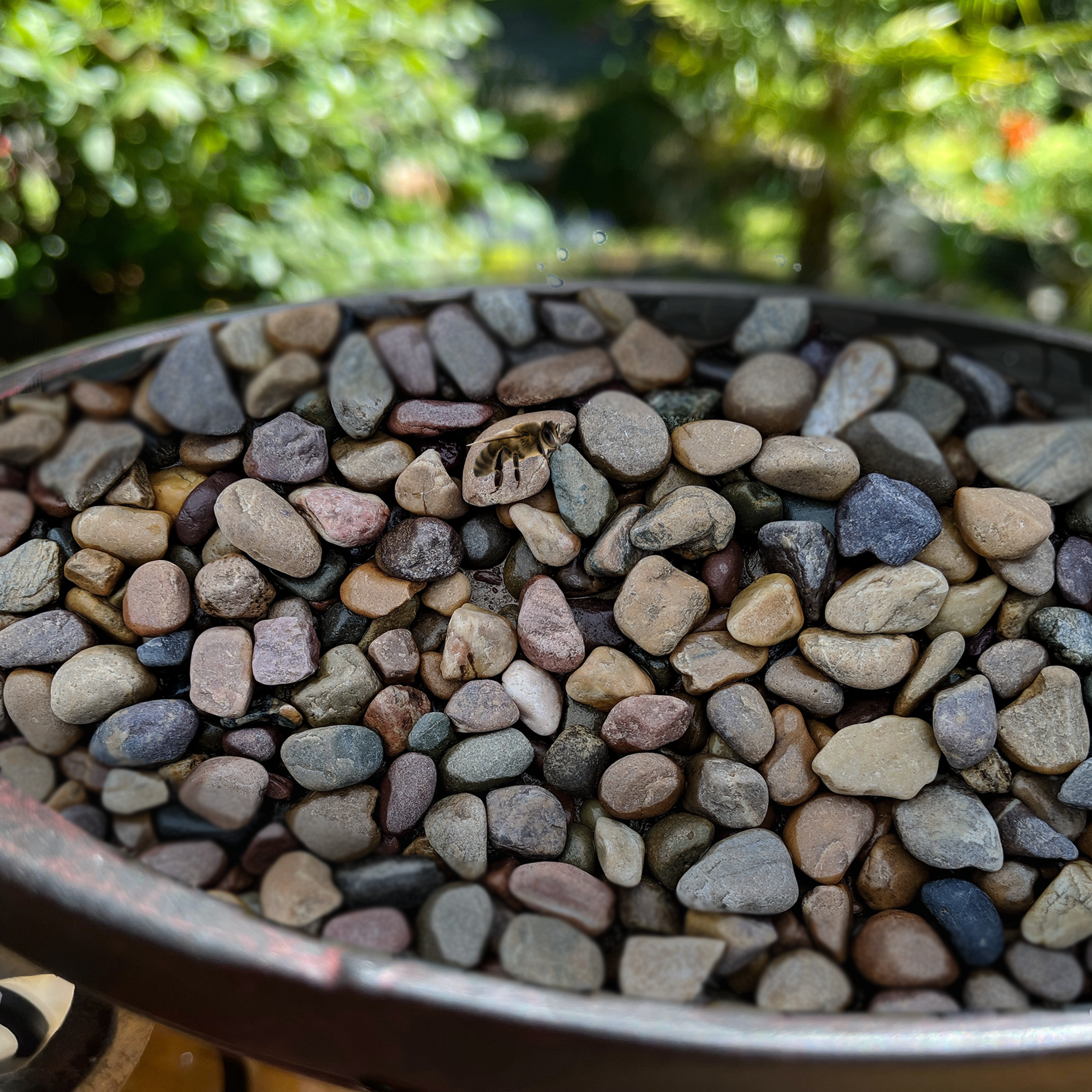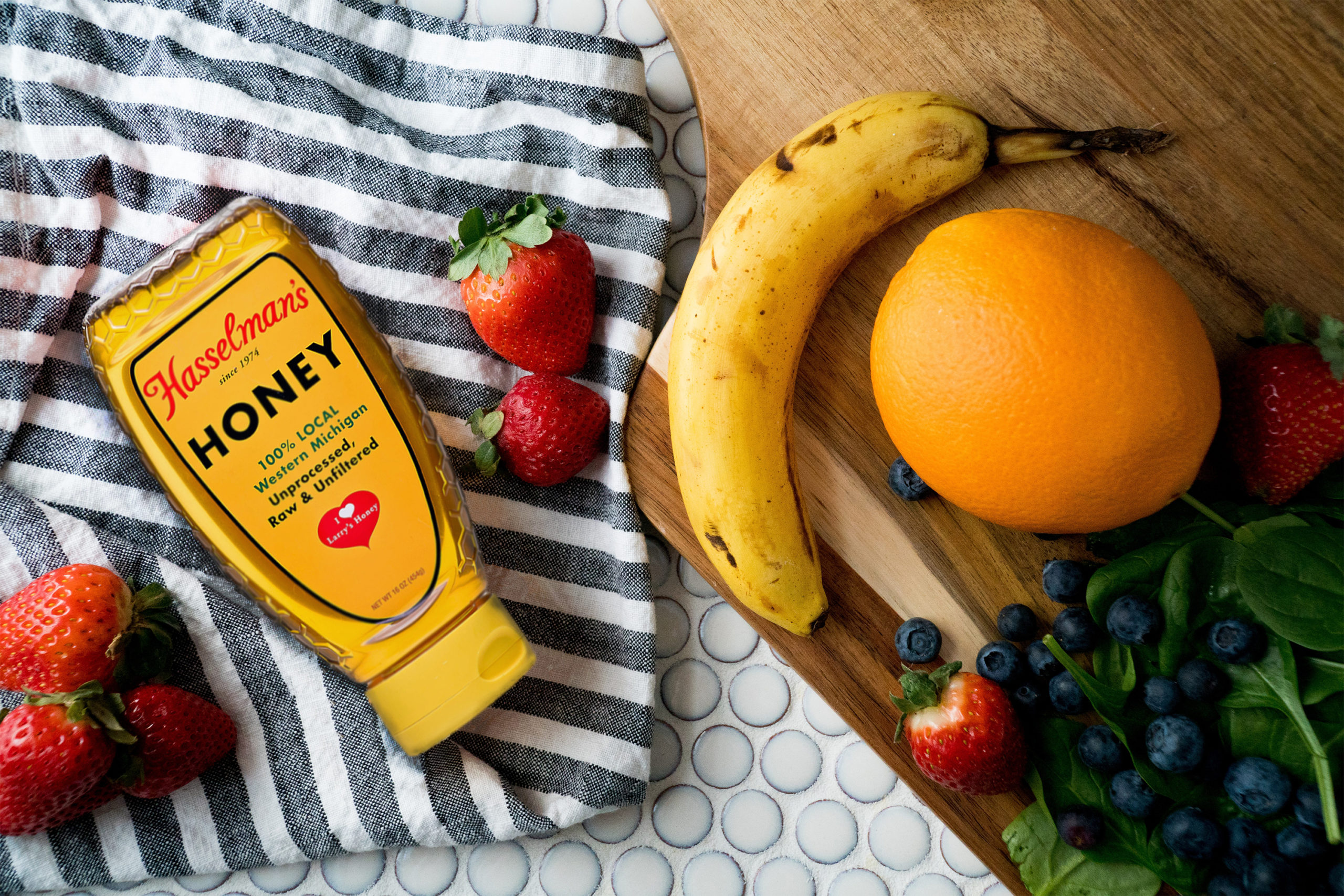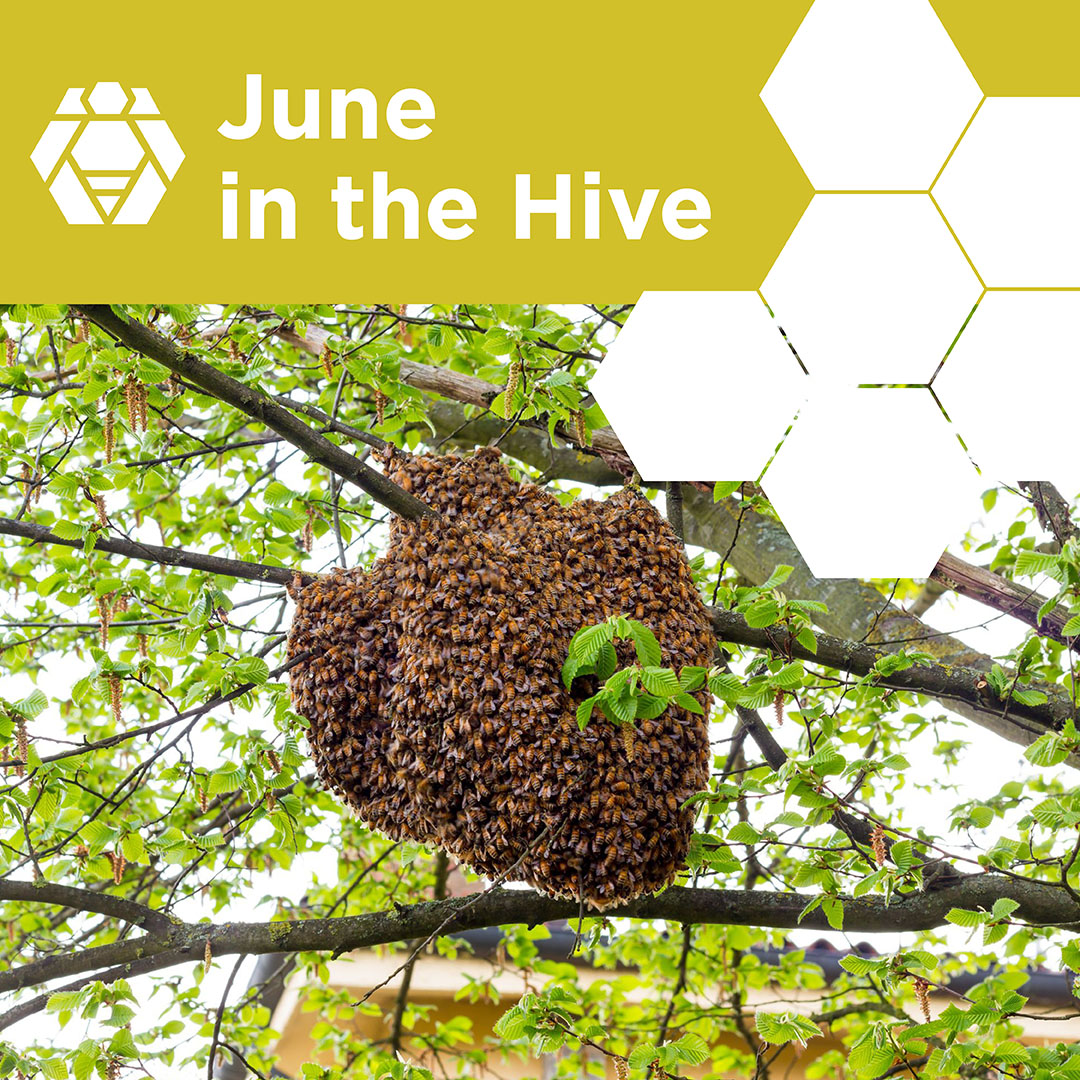
It’s bee season! Right now, Michigan bees are foraging on all the blossoming flowers and trees, including sumac, milkweed, basswood and clover, creating a robust nectar flow throughout the month of June.
While bees are out foraging, you might see them swarming as well. We’ve had a few calls about how to handle a swarm. No need to be alarmed – just a little patience and the swarm will usually disband, sometimes within about 15 minutes or an hour.
So why do bees swarm anyway?
A swarm occurs when the reigning queen and about half the bees rush out of the hive entrance together, clustering on a tree limb or another similar object. Bees will continue swarming as they look for a new home. Once the bees have found a new location, the cluster breaks up and the bees fly to their new hive.
The bees that did not leave the hive continue their work in the colony, collecting nectar and pollen and building honey combs. Within the colony, a new queen emerges and looks for rival queens. A “fight-to-the-death” combat ensues until there is only one surviving queen. Once the new queen has mated, she begins to lay eggs and the cycle begins again.
A bee’s natural instinct is to swarm when we have good weather. Since we haven’t had much rain lately in West Michigan, we’re seeing a lot of swarms. Just bee-patient and they’ll naturally move along.
Happy Bee Season!

